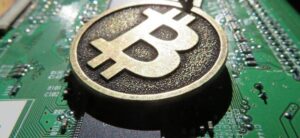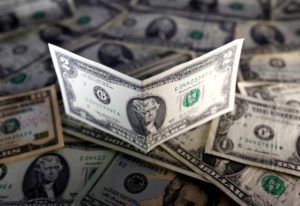
Fixygen analyzed the importance of regulators and their role in the crypto asset market. The cryptocurrency market is becoming increasingly sensitive to the rhetoric of central banks and the actions of financial regulators. Against the backdrop of expectations of interest rate changes and tighter rules for stablecoins and exchanges, the regulatory agenda is becoming one of the main drivers of price movements.
In its latest comments, the US Federal Reserve has allowed for the possibility of lowering the key rate in 2025, provided that inflation is under control. For cryptocurrencies, this is a signal of a potential increase in risk appetite and growth in liquidity in financial markets. The Fed’s policy easing traditionally supports interest in Bitcoin, Ether, and major altcoins, as investors are more actively engaging in strategies in the high-yield asset segment.
The European Central Bank maintains a more hawkish rhetoric, emphasizing the need to keep rates high to combat inflation, but at the same time notes a slowdown in the eurozone economy. This situation limits the inflow of European institutional capital into the crypto market in the short term, but reinforces expectations of future easing, which could be an additional stimulus for digital assets in the medium term.
The UK, through the Financial Conduct Authority, is tightening rules for stablecoins and crypto exchanges. The regulator is introducing stricter requirements for issuers’ reserves, transaction transparency, and investor protection. This increases the reliability of large stablecoins and infrastructure players, but may drive some smaller and less transparent projects out of the market.
Japan and South Korea are continuing their policy of tightening control over the crypto market with a focus on protecting retail investors. This includes stricter token listing rules, increased requirements for proven reserves, and exchange liability for fraudulent schemes. At the same time, these countries remain among the most technologically advanced markets, where digital finance and trading platforms are actively developing.
China officially maintains a tough stance on cryptocurrency trading, but at the same time promotes state blockchain solutions and the digital yuan. Through Hong Kong and special regimes for fintech companies, projects in the field of Web3 and tokenization are supported. Any easing or new pilot regimes in Hong Kong quickly affect regional liquidity and activity on Asian platforms.
Taken together, the statements and actions of regulators are creating a complex but gradually more structured environment for the cryptocurrency market. The easing of US monetary policy, stricter requirements for stablecoins and exchanges in Europe and Asia, and experimental regimes in China and Hong Kong will remain key factors for price dynamics and investor sentiment in the coming months.

Germany’s central bank does not expect the country’s GDP to grow in April-June 2025 after an unexpected rise in the first quarter. The economy has “probably stagnated” and the underlying trend is still characterized as “generally weak,” according to the Bundesbank’s monthly report.
The central bank warned that the introduction of 30% import duties recently announced by US President Donald Trump would create a “significant risk of economic decline.”
“In the short term, Germany’s export industry will face additional obstacles in the form of US tariff policy,” the Bundesbank said in a report.
Germany’s economy grew by 0.4% in the first quarter of 2025 compared to the previous three months. The GDP growth rate was the highest since the third quarter of 2022. However, this increase is largely due to attempts by businesses and exporters to get ahead of US duties.
Preliminary data on the dynamics of Germany’s GDP in the second quarter will be published on July 30.
Earlier, the Experts Club information and analytical center made a video analysis of the prospects for the Ukrainian and global economies, see more in the video – https://youtu.be/kQsH3lUvMKo?si=F4IOLdLuVbYmEh5P
Germany’s central bank expects the country’s economy to grow in April-June for the second consecutive quarter after falling at the end of 2023.
According to preliminary calculations of the statutory office of the Federal Republic of Germany, in January-March GDP increased by 0.2% compared to the previous three months. It fell 0.5% in October-December 2023.
“The economy is likely to expand slightly again in the second quarter,” the Bundesbank said in a statement on Wednesday.
Activity in the services sector was likely to have continued to strengthen on the back of rising household income and consumer spending.
“Growth in household disposable income is likely to take the upper hand from consumer uncertainty,” Central Bank analysts suggested.
However, they noted that the construction sector remains very weak.
The German labor market is expected to remain resilient and wages look set to continue to rise rapidly. This could be a risk to cooling inflation, which the Bundesbank estimates will accelerate slightly again in May.
The final data on Germany’s first-quarter GDP dynamics will be released on May 24, while preliminary information for the second quarter will be presented on July 30.
Earlier Experts Club analytical center and Maxim Urakin released a video analysis of how the GDP of the world’s countries has changed over the past years, more detailed video analysis is available here – https://youtu.be/w5fF_GYyrIc?si=BsZmIUERHSBJrO_3.
Subscribe to Experts Club YouTube channel here – https://www.youtube.com/@ExpertsClub
CENTRAL BANK, ECONOMY, EXPERTS CLUB, GDP, GERMANY, MACROECONOMICS, URAKIN

The National Bank of Ukraine (NBU) bought $269.6 million on the interbank foreign exchange market from September 16 to September 20, which is 36.2% more than the previous week.
Some $80 million was purchased at the best purchase price (using a matching tool), $189.6 million was purchased at a flat rate (using the matching tool), the NBU said on its website. The central bank did not sell currency last week.
Since the beginning of 2019, the NBU has bought $3.81 billion and sold $248.23 million on the interbank market. In particular, the National Bank bought $582.1 million in the three weeks of September, purchases from August 5 to August 30 totaled $316 million, they amounted to $760.9 million in July and $322.3 million in June.